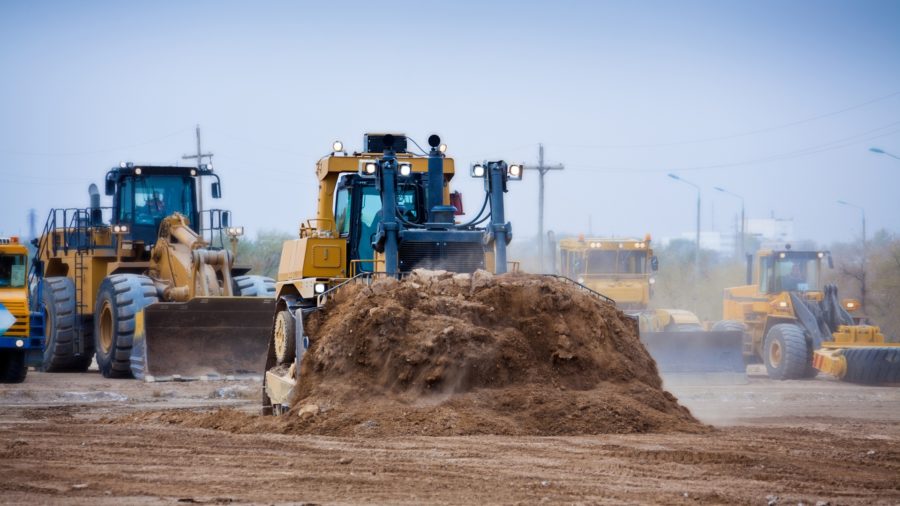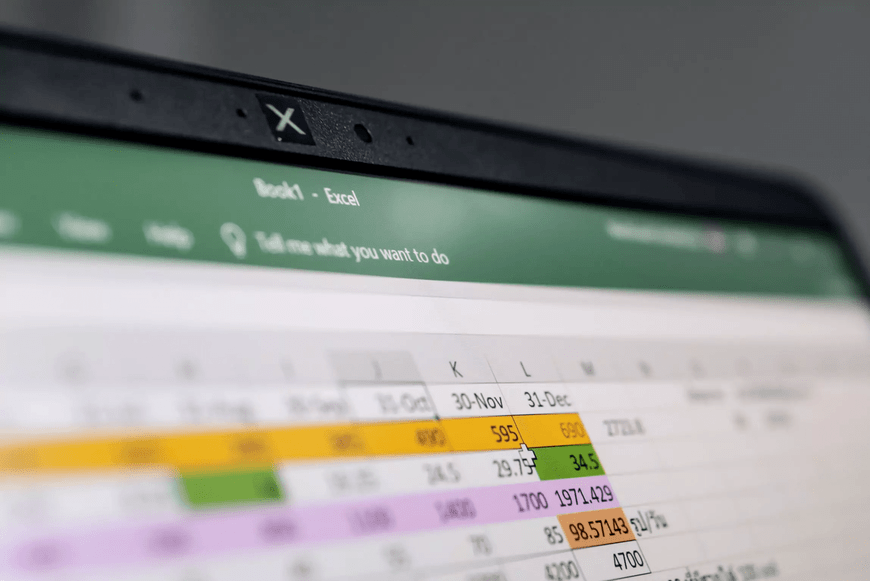
The construction project manager watches the computer screen as the map pinpoints the GPS location of all clocked-in employees on all the job sites in progress across the region. Six projects – six field crews. Each with heavy machinery assets deployed at their different locations.
Everything is visible and identifiable with the click of a mouse.
Switching out of the busybusy app screen, the manager takes control of the video feed from a job site observation drone auto-positioned above an excavator opening up trenches according to the footings layout plan. The manager checks the excavator’s progress with laser accuracy as it works its way across the site.
Construction drones and robots rule
At the edge of the drone camera’s field of view, the manager can see a material bot unloading and stacking prefabricated concrete forming modules that it will install once the footing trenches are complete.

The project manager sees that progress is a little ahead of schedule here, compared to another project that has fallen a bit behind schedule. The manager messages the site supervisor there, where the delay has left a machine sitting with unscheduled idle time. That machine can be transferred here to take advantage of the advanced schedule and push the productivity even further ahead at this site. Equipment ROI that would have been lost is recaptured by that simple transfer of equipment, and an early-completion bonus for the advanced project is kept in clear sight as well.
Construction technicians rule too
A few messages later, the six job site team leaders have arranged a self-forming sub-crew of construction technicians and tools ready to go. They provide necessary support on the project where the schedule is slipping until that project is up to date.
The difference in ROI is potentially doubled here, as a missed-deadline penalty is transformed into an early-completion bonus possibility. The other job site crews make temporary adjustments to their scheduled work hours to cover for the missing workers. By the end of the week, everything should be back on track or ahead of schedule right across the board. Profits are healthy, the boss is happy.
Back to the future of construction
Some of these ideas still sound a little far-fetched for practical applications today. But in fact, when you think about it, most of these scenarios are already pretty commonplace. Or they are at least being used in field trials and experimental stages of development.

It makes it easy to see how far construction has come in the movement into digital and mechanical productivity enhancements – pointing out the way the future of the industry is likely to unfold, even if we don’t start calling all construction workers ‘technicians’ right away.
The power of digital, cloud-based information technology combined with advances in material sciences, power management systems, and precision location mapping has the potential to transform both the work and the workers in construction.
High-skill operators with hi-tech machines and material components will replace much of the heavy labor and repetitious aspects of many building trades. The emphasis for workers will shift away from physical exertion more toward technical expertise. This predicts a natural evolution in the sense that advanced construction trade skills have always had a high level of expertise involved in mastering the trade. That is not going to change.
Managing job site assets for maximum ROI
What will change over time are the value and investment scale that goes into a well-equipped construction operation. As machines get smarter and more complex, they will become more capital-intensive to own and to finance as well. However, if they deliver the productivity gains they are designed to, the rate of return and the overall value of equipment asset ROI should rise along with all the other metrics.
This positive financial dynamic may see further growth as the use of digital fabrication emerges with a greater role in prefabrication manufacturing, precision placement of building materials and components, and freeform innovations in architecture and design. Think of 3-D printing on a massive scale. The kind of automated equipment that is now appearing on job sites may be looked upon in a decade or two as clumsy prototypes that paved the way for the truly major technological advances to gain momentum.
Digital concrete and other fabrications
Described by The Economist (2012) as the “third industrial revolution,” digital fabrication promises free-form architecture, lower construction costs, reduced on-site material waste, and greater safety for workers. These aims appear to be possible if certain challenges can be overcome.
These are described mainly as “mechatronic challenges” in the context of a study of digital concrete from about a year ago. This study goes deep into the science of concrete, robotics, and architectural fabrication in general. The remaining barriers to industry-wide adoption of digital concrete applications have to do with precision sensing, localization abilities both in space and in relation to a particular work piece, and dealing with unknowns in the work place and the immediate environment.
It’s clear that there are widely differing views on the impact and value of technology and automation in material fabrication, and on the effect they will have on construction jobs and construction workers in the future. The answers to many of these questions will be forged in the hot mix of experience, education, and on-the-job evolution over the next 5, 10, and 20 years out.
Back to the robot bricklayer
An even-handed discussion in this detailed 5-minute video looks at different perspectives about the robotic Semi-Automated Mason and the future of workers and robots together in the bricklaying trade. Consider the pros and cons in the words of employees and managers who have extensive experience working with this state-of-the-art example of construction automation.
For an even wider range of viewpoints, check out some of the almost 2,400 comments left by the nearly 1 million viewers of the video. The intensity of a few remarks (apart from the inevitable haters and trolls) shows just how volatile this issue might become as it plays out. And it shows how a solid combination of business vision, technological foresight, and courage of conviction will be needed to make the right productivity-based decisions as this brave new world of construction unfolds.











